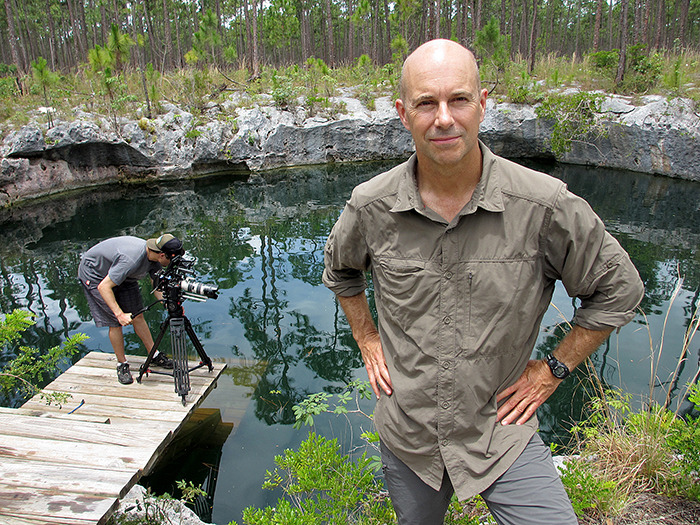A week of testing our B cam beam splitter rig system has revealed that the Sony EX1/EX3 duo we’re using with the Film Factory 3D BS Indie Rig aren’t ideal for shooting our first 3D documentary.
The issue isn’t technical – Alister Chapman reports using the same cameras successfully, and we were able to genlock the EX3 to the EX1 by connecting the EX1’s Y channel of the component output to the EX3’s genlock in connector, just as he has.
It’s logistical …the cameras are just too big and cumbersome for this particular beam splitter rig.
We’ve modified the rig so they fit better, but getting them aligned vertically is rough – the mics protrude and we’re still seeing the edge of the box and/or the bottom of the mirror when we use our Sony EX 5.8 mm lens (which has a 56-degree horizontal angle of view).
Wide shots are a must for Blowdown, the explosive demolition documentary we’ll be filming, so we need a system that will effectively capture this kind of footage – ie. we need to hit the sweet spot on the mirror, have the cameras vertically aligned and not see the rig when we use wide-angle lenses.
The alternative is enlarging the image in post to eliminate the part(s) of the shot that contain the rig, but that will degrade the quality, so I want to try and avoid this (especially since we’ll be blowing the footage up it to a certain degree already to facilitate convergence).
So, now we’re working with Canon Canada directly to get loaners of the XF305, which has just been released.
These cameras would be better than the EX1/EX3 system for several reasons:
1) Newer technology – both cameras would have genlock capabilities, and use HDSDI so we can record directly to our nano3D recorder at a bit rate higher than 100 MB/S, our broadcaster’s standard. It’s worth mentioning that their default bit rate is higher than the EXs – 50 MB/S as opposed to 35 MB/S.
2) Lighter and smaller – this means they should be a better fit with the rig.
3) Two identical systems – the EXs are different models, manufactured in different batches, likely at different factories. This may sound trivial, but when you’re trying to sync two cameras even minute differences can reduce stereo success.
Since the Canons are so new, and we’re working directly with the manufacturer, it’s likely we’ll get two cameras from the same serial number batch, made in the same factory.
Hoping this will come through – then we can theoretically nail down vertical alignment, and comfortably, confidently make other adjustments knowing we’ve got at least one variable under control.

